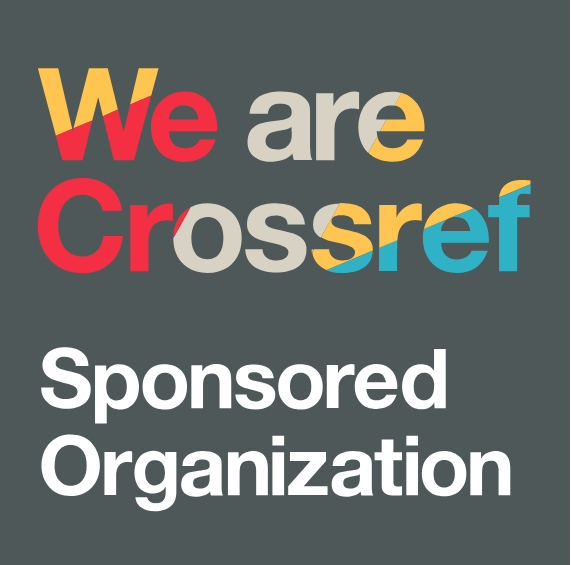Consumer Awareness and Behavior toward the Risks of Harmful Ingredients in Skincare Products: A Thematic Analysis in the Digital Era
DOI:
https://doi.org/10.38035/sijdb.v2i4.230Keywords:
Consumer Awareness, Hazardous Ingredients, Skincare Safety, Qualitative Study, Behavioral ChangeAbstract
This study examines consumer awareness regarding the risks of hazardous ingredients in widely used skincare products in Indonesia. The research background highlights the high usage of skincare products, often without adequate understanding of their composition and potential dangers. The objective of this study is to analyze how consumers identify harmful ingredients, their experiences with unsafe products, and behavioral changes that follow. This research employs a qualitative method through thematic analysis of open-ended responses from skincare users. The results indicate that consumers are increasingly selective, prioritizing product legality and ingredient transparency, and utilizing social media, ingredient-checking applications, and professional consultations as sources of information. Moreover, negative experiences such as skin irritation and other side effects contribute to a more cautious and critical attitude toward product claims. The study concludes that education, transparent information, and consumer protection are key elements in fostering safe and responsible skincare consumption practices.
References
Aaker, D. A. (2021). Building strong brands. The Free Press.
Ajzen, I. (2021). The theory of planned behavior. Organizational Behavior and Human Decision Processes, 50(2), 179–211. https://doi.org/10.1016/0749-5978(91)90020-T
Ali, F., Khan, M. A., & Iqbal, S. (2023). Critical consumer behavior in evaluating cosmetic claims. International Journal of Consumer Studies, 47(1), 45–57.
Anderson, R., Smith, T., & Liu, J. (2020). Long-term effects of synthetic skincare ingredients. Journal of Cosmetic Science, 71(3), 215–228.
Bandura, A. (1977). Social learning theory. Prentice Hall.
Champion, V. L., Skinner, C. S., & Glanz, K. (2021). The health belief model. In K. Glanz, B. K. Rimer, & K. Viswanath (Eds.), Health behavior: Theory, research, and practice (5th ed., pp. 75–94). Jossey-Bass.
Chen, Y., Liu, S., & Zhang, J. (2021). Consumer trust in skincare advertising: Credibility of influencer marketing. Journal of Advertising Research, 61(2), 170–183.
Choi, Y., Kim, H., & Park, J. (2021). Trust through transparency: The effect of labeling and certification on consumer trust in skincare products. Journal of Consumer Policy, 44(3), 367–384.
Del Rosso, J. Q., & Draelos, Z. D. (2021). Cosmetic dermatology: Products and procedures (2nd ed.). Wiley-Blackwell.
Ghazali, E., Soon, P. C., & Osman, Z. (2021). Transparency in cosmetic product labeling and consumer loyalty. Asian Journal of Business Research, 11(2), 1–12.
Glanz, K., Rimer, B. K., & Viswanath, K. (2021). Health behavior: Theory, research, and practice (5th ed.). Jossey-Bass.
Hasan, M. F., Alom, M. M., & Ahmed, S. (2023). Digital consumer behavior and mobile apps in skincare decision-making. International Journal of Market Research, 65(1), 44–63.
Hwang, J., & Lee, H. (2023). The role of influencer expertise on consumer trust in skincare product endorsements. Journal of Interactive Marketing, 61, 101–113.
Johnson, M., & Lee, S. (2022). Understanding consumer awareness in the skincare industry. Journal of Global Marketing, 35(4), 289–305.
Kim, J., & Lee, Y. (2022). Psychological reactance and consumer skepticism in skincare advertising. Journal of Consumer Behaviour, 21(6), 1175–1190.
Kim, J., & Seock, Y. (2021). Skincare product review credibility and consumer decision-making. Fashion and Textiles, 8(1), 1–16.
Kotler, P., & Keller, K. L. (2023). Marketing management (16th ed.). Pearson Education.
Lee, J., & Kim, S. (2022). Risk perception and ingredient awareness in skincare selection. Journal of Consumer Protection and Food Safety, 17(2), 101–113.
Lee, S., & Park, J. (2021). Cosmetic safety perception and regulatory awareness. Asian Journal of Consumer Research, 4(1), 55–66.
Lin, Y., Zhang, H., & Wei, X. (2023). Digital consumer empowerment in skincare markets. Journal of Business Research, 156, 113472.
Nguyen, T., Pham, L., & Bui, M. (2021). The influence of e-WOM on skincare purchase intention. Journal of Retailing and Consumer Services, 61, 102553.
Park, S., & Kim, H. (2023). Increasing cosmetic safety awareness through digital campaigns. Health Education Research, 38(1), 24–35.
Park, Y., & Lim, H. (2023). Post-purchase satisfaction in skincare products: Role of product performance and expectations. Consumer Studies Journal, 34(2), 95–110.
Rahman, M., Chowdhury, S., & Islam, N. (2023). Skincare ingredient literacy and consumer safety. International Journal of Consumer Studies, 47(3), 314–328.
Rosenstock, I. M., Strecher, V. J., & Becker, M. H. (2021). The health belief model and preventive health behavior. Health Education Quarterly, 11(2), 170–186.
Smith, L., Turner, D., & Evans, A. (2023). Regulatory concerns in the global skincare market. Regulatory Toxicology and Pharmacology, 131, 105148.
Solomon, M. R. (2022). Consumer behavior: Buying, having, and being (13th ed.). Pearson Education.
Sun, Y., Zhang, S., & Wang, H. (2021). The role of electronic word of mouth (e-WOM) in cosmetic consumption. Journal of Marketing Communications, 27(6), 631–649.
Wang, L., Zhang, X., & Li, Y. (2022). Trust recovery after negative cosmetic experiences. Journal of Brand Management, 29(5), 499–518.
Widyaningtyas, E., & Arumsari, N. P. (2022). Health consciousness in skincare consumption: Evidence from Indonesia. Indonesian Journal of Marketing Science, 20(1), 66–80.
Williams, B., & Brown, L. (2021). Long-term health impacts of toxic skincare ingredients. Toxicology Reports, 8, 543–552.
Yusof, R., Abdullah, N., & Latif, A. (2023). Illegal skincare products in emerging markets. Journal of Public Health Policy, 44(1), 23–39.
Zhang, X., Liu, H., & Zhao, Y. (2021). Trust recovery strategies in the cosmetic industry. Journal of Product & Brand Management, 30(2), 217–229.
Zhang, Y., Wang, C., & Wu, J. (2022). Consumer perception of natural skincare: Certification and product authenticity. Sustainability, 14(18), 11423.
Zhao, L., Tan, J., & Hu, W. (2023). Ingredient transparency and consumer self-regulation in skincare. International Journal of Consumer Studies, 47(1), 78–93.
Downloads
Published
How to Cite
Issue
Section
License
Copyright (c) 2025 Azzahrah Putri Haykal, Usep Suhud, Mohamad Rizan

This work is licensed under a Creative Commons Attribution 4.0 International License.
Copyright :
Authors who publish their manuscripts in this journal agree to the following conditions:
- Copyright in each article belongs to the author.
- The author acknowledges that the Siber International Journal of Digital Business (SIJDB) has the right to be the first to publish under a Creative Commons Attribution 4.0 International license (Attribution 4.0 International CC BY 4.0).
- Authors can submit articles separately, arrange the non-exclusive distribution of manuscripts that have been published in this journal to other versions (for example, sent to the author's institutional repository, publication in a book, etc.), by acknowledging that the manuscript has been published for the first time at Siber International Journal of Digital Business (SIJDB).























